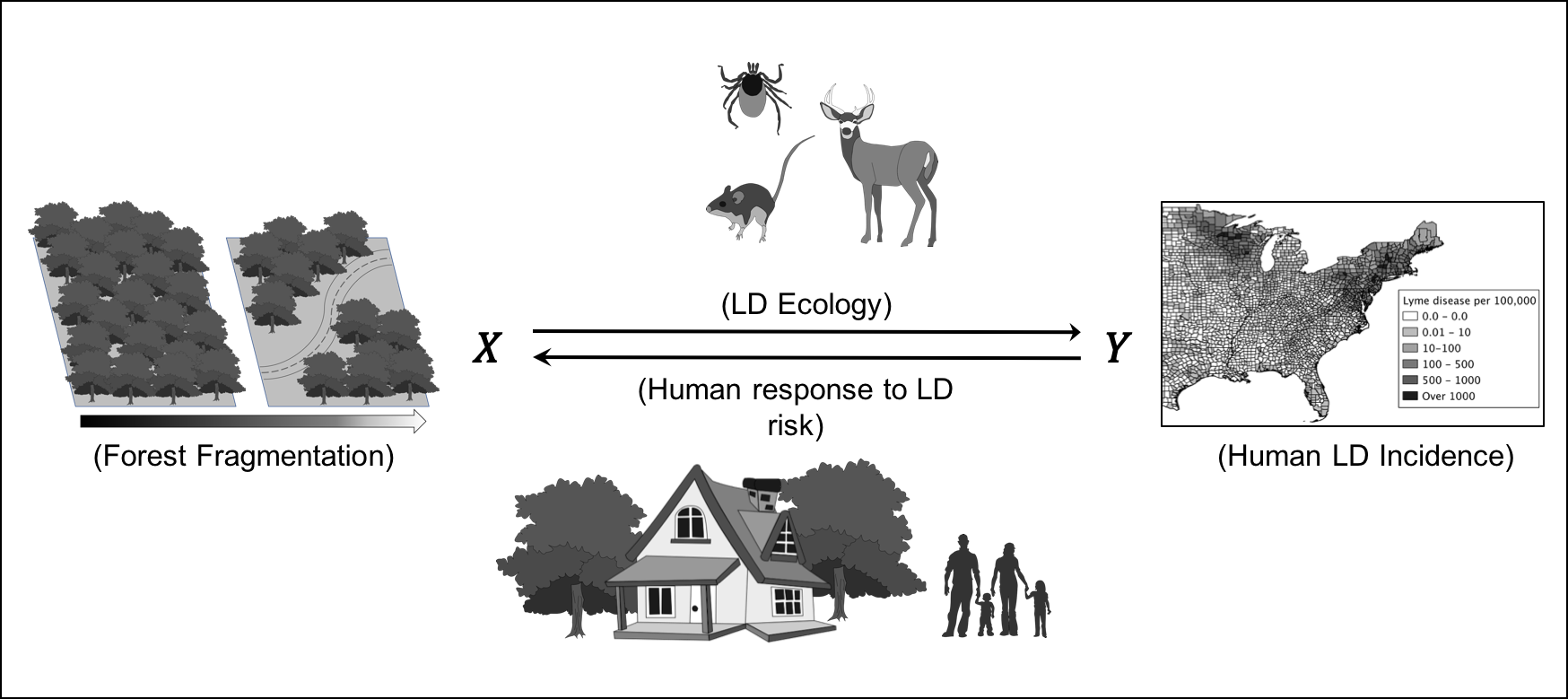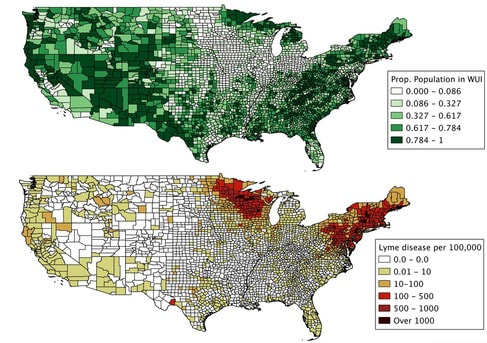Photo available from Wikimedia commons.
Summary: Habitat loss and fragmentation have pervasive impacts on natural systems, and are central elements of anthropogenic environmental change. In the US Northeast, a period of reforestation followed agricultural production in the region as people and jobs moved to cities in the early 20th century. Recent expansion back into forests, driven by suburban development has served to fragment forests across the northeastern US. This fragmentation has had important consequences for the animal host communities that support tick populations and transmission of the Lyme disease spirochete in the region, including evidence that fragmented forests support fewer vertebrate species, higher abundance of reservoir hosts for the bacteria and larger populations of ticks. However, these findings and patterns are controversial and the results of studies attempting to link forest fragmentation directly to human disease incidence have been mixed.
|
One of the most important, but least explored questions in disease ecology is how human behavior interacts with ecological systems to produce patterns of human disease. Most ecological studies investigating human disease risk use entomological risk (e.g. vector infection prevalence) or some other proxy for risk without incorporating feedbacks between these proxies and human behavioral responses to risk.
With colleagues from UCSB's Bren School, we have investigated the importance of these feedbacks in Lyme disease transmission in the Northeast. We find that human settlement decisions respond to Lyme disease risk, namely that settlement in the wildland urban interface declines when Lyme disease risk is high (study published in American Journal of Tropical Medicine and Hygiene). Accounting for this feedback from Lyme disease risk back to forest fragmentation, we identify a strong and consistent positive effect of human driven forest fragmentation on Lyme disease incidence in the Northeast (study published in Journal of Applied Ecology) |

Socio-ecological feedbacks in the Lyme disease system. Forest fragmentation influences Lyme disease transmission through ecological factors, and Lyme disease risk influences forest fragmentation through social and behavioral factors. Figure adapted from MacDonald et al. 2018, Journal of Applied Ecology.
|

